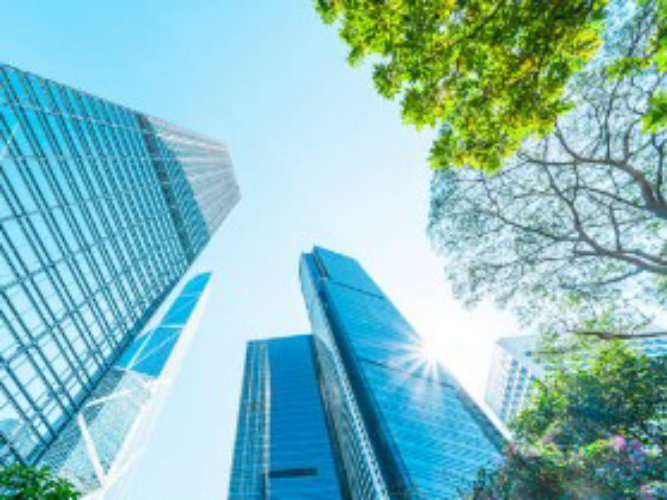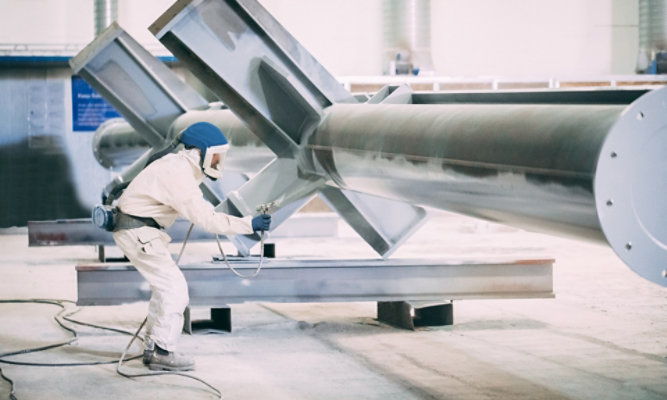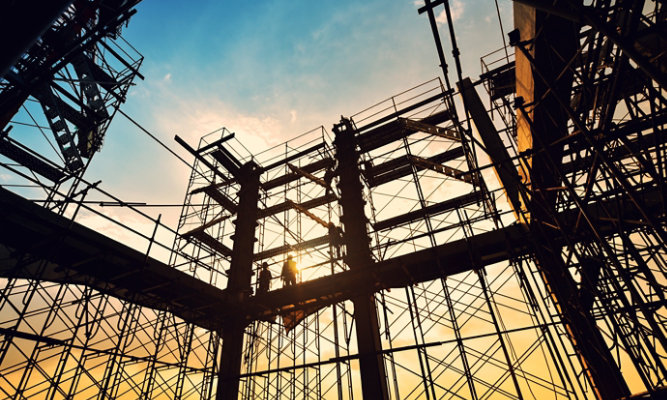A Sustainable Design for Life
Fire at Sherwin-Williams, explains how working with a manufacturer that takes its environmental responsibilities seriously can make life easier through the use of products, knowledge and tools that maximise a building’s green credentials.
by Carl Burrell, Global Product Director – Fire, for Sherwin-Williams Protective & Marine

Although most organisations recognise an obligation to operate as sustainably as possible, putting theory into practice is not always straightforward. Carl Burrell, Global Product Director – Fire at Sherwin-Williams, explains how working with a manufacturer that takes its environmental responsibilities seriously can make life easier through the use of products, knowledge and tools that maximise a building’s green credentials.
Organisations are under increasing pressure to reduce their carbon footprints, so sustainability must be far more than a tick in the corporate social responsibility box. The 26th UN Climate Change Conference of the Parties (COP26) highlighted why it’s time to stop paying lip-service to the issue of carbon reduction. While government-led strategies and targets are important, every organisation has a part to play in tackling the climate crisis.
Reducing a building's environmental impact
It’s no secret that architects and designers can reduce buildings’ impact on the environment and help protect natural resources through sustainable design and construction practices. However, developing a workable and effective environmental strategy can be a complex task, as creating a truly green building is only achievable by taking a joined-up approach to its entire infrastructure. Everything in a building is interconnected and while some services such as lighting and heating, ventilation and air conditioning are more obvious targets for efficiencies, calculating a building’s carbon footprint including elements such as fire protection and material coatings is just as vital.
Owners and managers will often seek compliance to a particular sustainability certification system in order to demonstrate their building’s credentials. There are more than 100 of these operating globally but the two of the most widely recognised and respected are Leadership in Energy and Environmental Design (LEED) and the Building Research Establishment Environmental Assessment Method (BREEAM).
To ensure that a building is designed and constructed with a certain level of environmental responsibility across its entire lifecycle, individual products can contribute towards the credits needed to obtain these types of certifications. It is, however, important to remember both LEED and BREEAM are measurement tools and do not mitigate poor design – therefore the design process should always come first and indicate which products work best in a particular situation.
Discovering the sustainability attributes of coatings
Architects, engineers, specifiers, contractors and others involved with building design, construction and operation are faced with the problem of ascertaining the sustainability attributes of the products they use. This is often easier said than done, as some manufacturers are simply unwilling and/or unable to provide this level of information, which makes it difficult to achieve credits for certification systems like LEED and BREEAM.
Through the PCR for paint products, Sherwin-Williams utilise a 'cradle to grave' approach to evaluate the products in the Protective & Marine range. A 'cradle to grave' analysis examines from the extraction of natural resources through to each subsequent stage of manufacturing, transportation, use and, ultimately, disposal. This enables informed choices to be made during the design stage that support efforts to make a building more sustainable.
Some manufacturers’ coatings for internal walls, floors and ceilings feature low or no volatile organic compound (VOC) content, contributing to better air quality for a building’s occupants. Independently verified laboratories confirm a product’s emissions and this data can then be used to validate compliance to specific building certification schemes, allowing products to contribute towards LEED and BREEAM credits.
Environmental Product Declarations for coatings products
The information gained as a result of this thorough ‘cradle to grave’ process can be found in an Environmental Product Declaration (EPD) document. An Environmental Product Declaration communicates the environment impact of a product over its life cycle. It reports the effects into a variety of impact categories which can include Global Warming Potential (GWP), Acidification Potential, Smog Formation Potential. and more.
In order to construct an EPD, the ISO 14025 Type III standard should be adhered to. This states that an EPD must use quantified product lifecycle information according to predetermined parameters. Each individual EPD output is the quantity of product needed for the building lifecycle in kilogrammes and the resulting Global Warming Potential (GWP) in kilogrammes per carbon equivalent (kg CO2e) for the product.
Choose the right coating product with expert advice
Although EPDs have made the selection process more informative and straightforward, the use of specific products can only be fully optimised if the carbon content output of a building’s fire protection requirements is calculated. This is where direct engagement with a manufacturer’s expert mechanical and structural engineers can make all the difference. Sherwin-Williams has created its Fire Engineering and Estimating Team (FEET) specifically for this purpose.
FEET’s unique blend of experience and expertise means it can offer engineering information and solutions, with expertise in the use of intumescent coatings, as early as the concept stage. By using the company’s FIRETEX® Design Estimator (FDE) software, complex fire calculations can be made for both cellulosic and hydrocarbon fire preparedness – while making it possible to calculate the exact quantity of thin-film intumescent coating needed to provide fire protection to a specifically sized steel section.
Combined steel- and fire-optimised designs offer the most cost-effective, targeted and value-engineered solutions. By factoring in third-party validated CO2 equivalent values for the FIRETEX® range of materials, FDE software has the capacity to deal with any type of steel section, in addition to completing designs based upon specified critical temperatures.
The road to environmentally responsible building design
Sustainability is becoming a high priority when selecting products and supply chain partners, and it’s important to work with industry partners that take a holistic approach to reducing their own carbon footprints, as well as those of their customers. Those that do this go beyond simply using more sustainable materials here and there, as they consider sustainability throughout the entire product lifecycle in addition to design, manufacture and delivery. Remember, you don’t have to do it alone – by partnering with a manufacturer that provides the right solutions and expertise, you create a path to a more environmentally responsible building design.
Discover More
Industry Expertise and Innovation
Explore customised solutions we deliver for customers to address their project and application challenges.
Technical Service
We're here to ensure your entire project is running smoothly and efficiently.
LEARN MOREProduct Lookup
Find out more about our innovative coatings for a variety of industries.
FIND A PRODUCT


